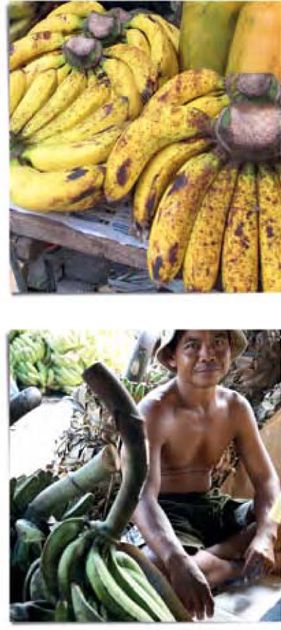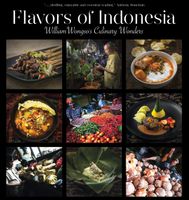Bananas
Pisang
Published 2016

Bananas are so important in Indonesian daily life that they can be found everywhere. They are by the street-side, deep-fried in rice flour. They are baked to fill the bread together with cheese. The leaves are used to wrap steamed rice or fish, imparting an appetizing fragrance to the dish. Grandmothers will even rub the scars of their grandchildren’s chicken pox with the inside of the skin of pisang susu, to supposedly cure them.
There are around 30 varieties of bananas that flourish in Indonesia, but only half of them actively cultivated. They fall into two categories based on the way they are consumed – the “dessert bananas” that can be eaten raw, and the plantains, or “cooking bananas” that are steamed, boiled, baked, deep-fried, or grilled. Popular variants like Giant Cavendish, the petite pisang susu, pisang ambon, and pisang seribu are among the first group, while the extra-long pisang tanduk (25-35 centimeters), pisang asam, pisang kepok, and pisang udang need to be processed before consumption.
Become a Premium Member to access this page
Unlimited, ad-free access to hundreds of the world’s best cookbooks
Over 160,000 recipes with thousands more added every month
Recommended by leading chefs and food writers
Powerful search filters to match your tastes
Create collections and add reviews or private notes to any recipe
Swipe to browse each cookbook from cover-to-cover
Manage your subscription via the My Membership page
Part of
Advertisement
Related Recipes
-
-
-
-
Related Reference
-
-
-
-
Advertisement



